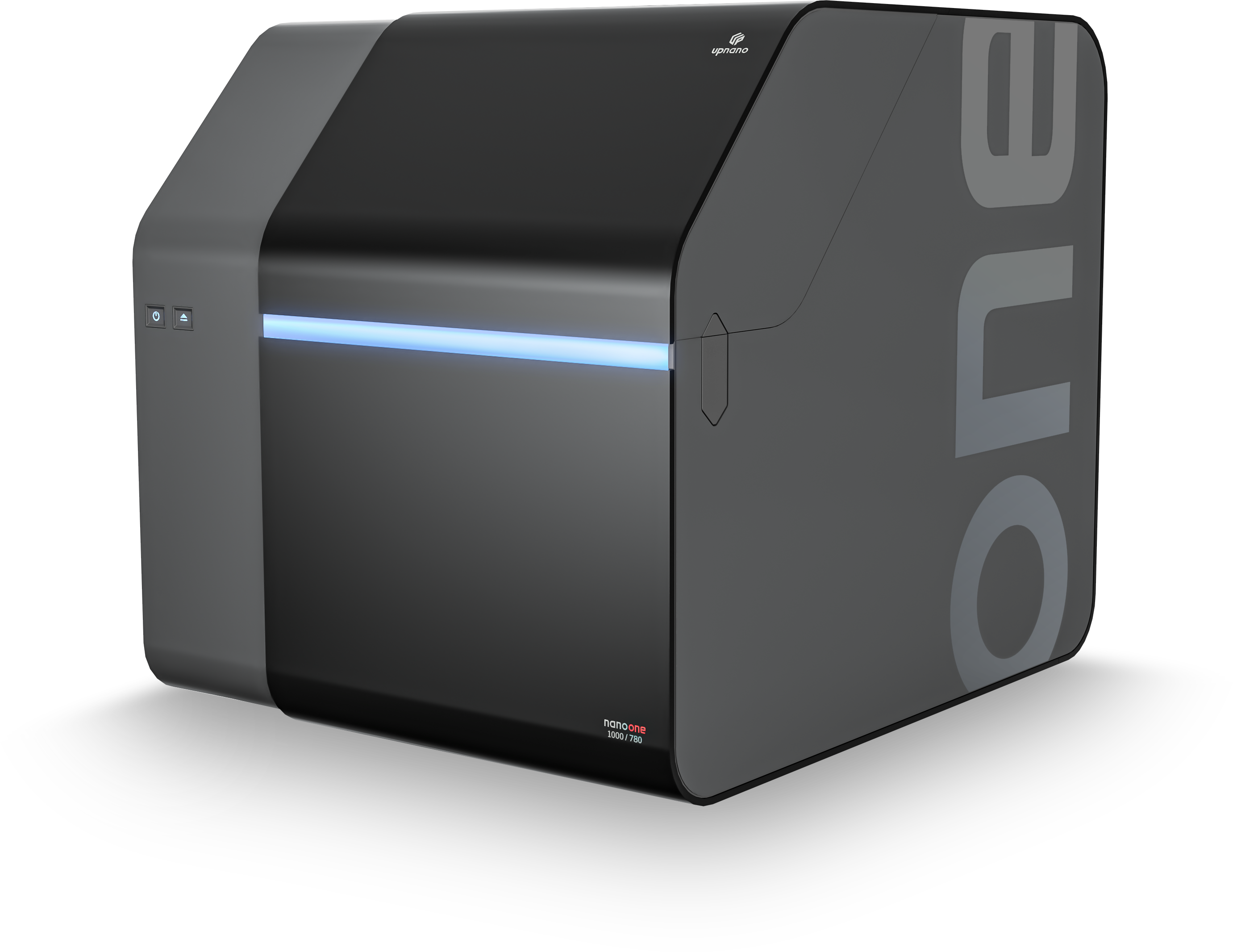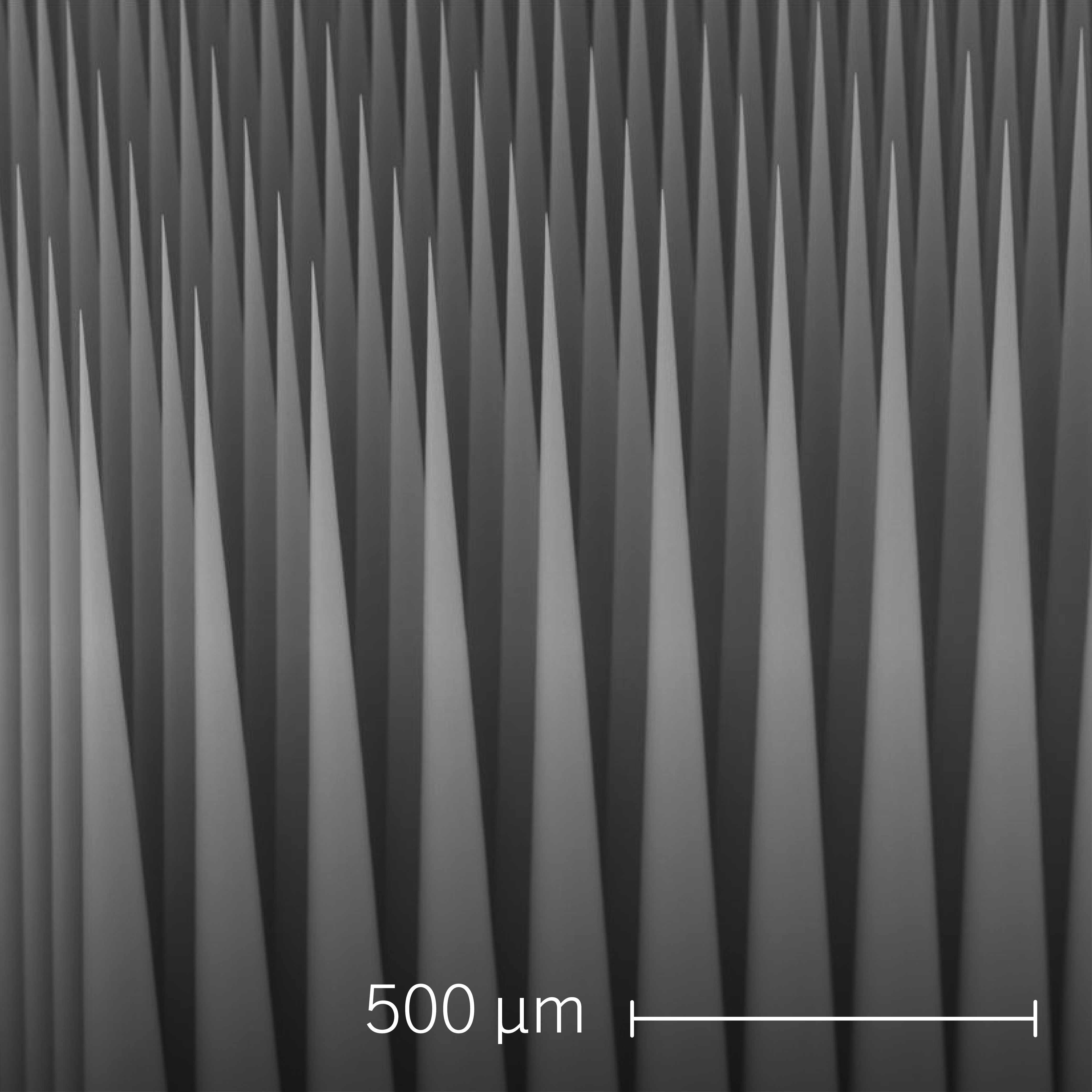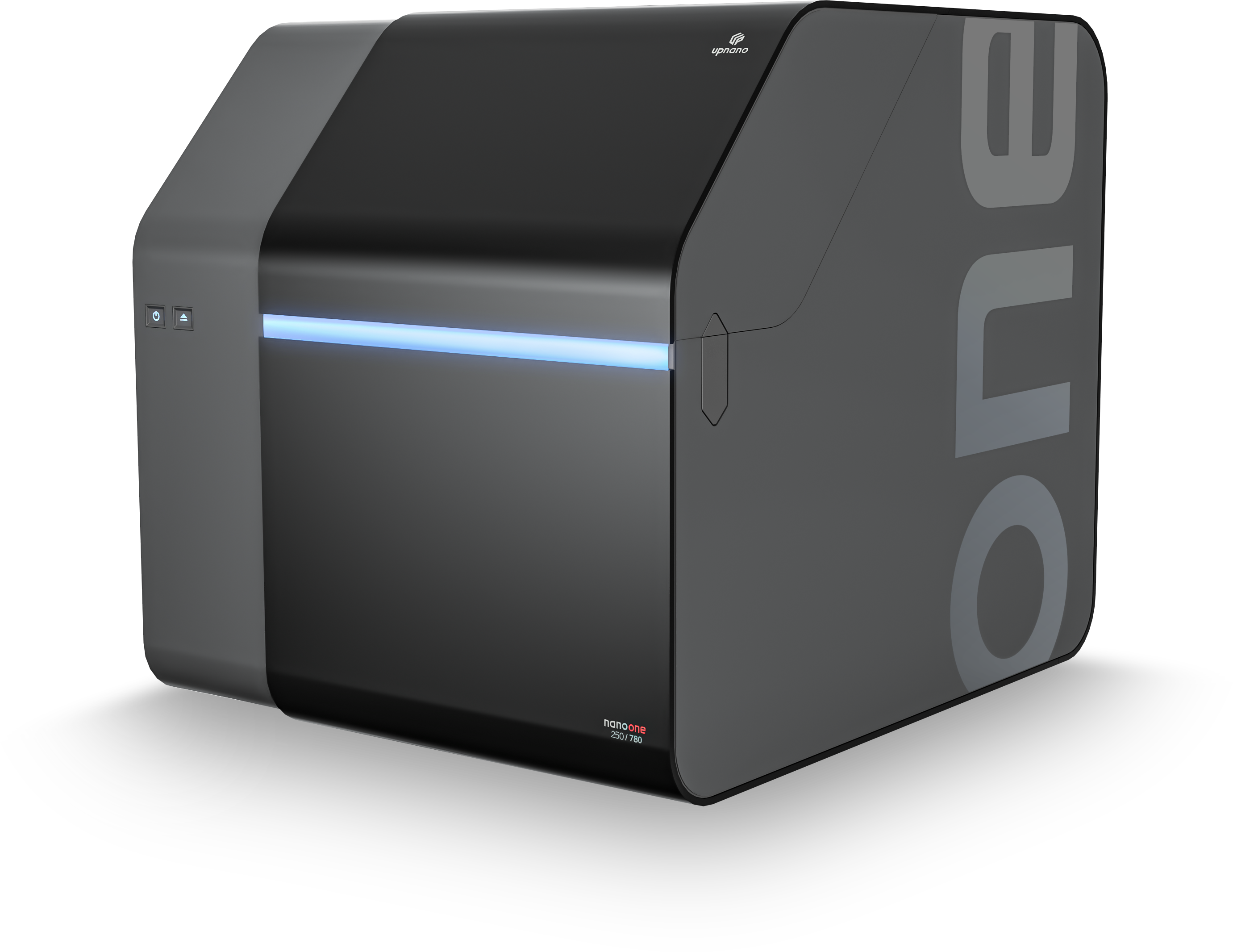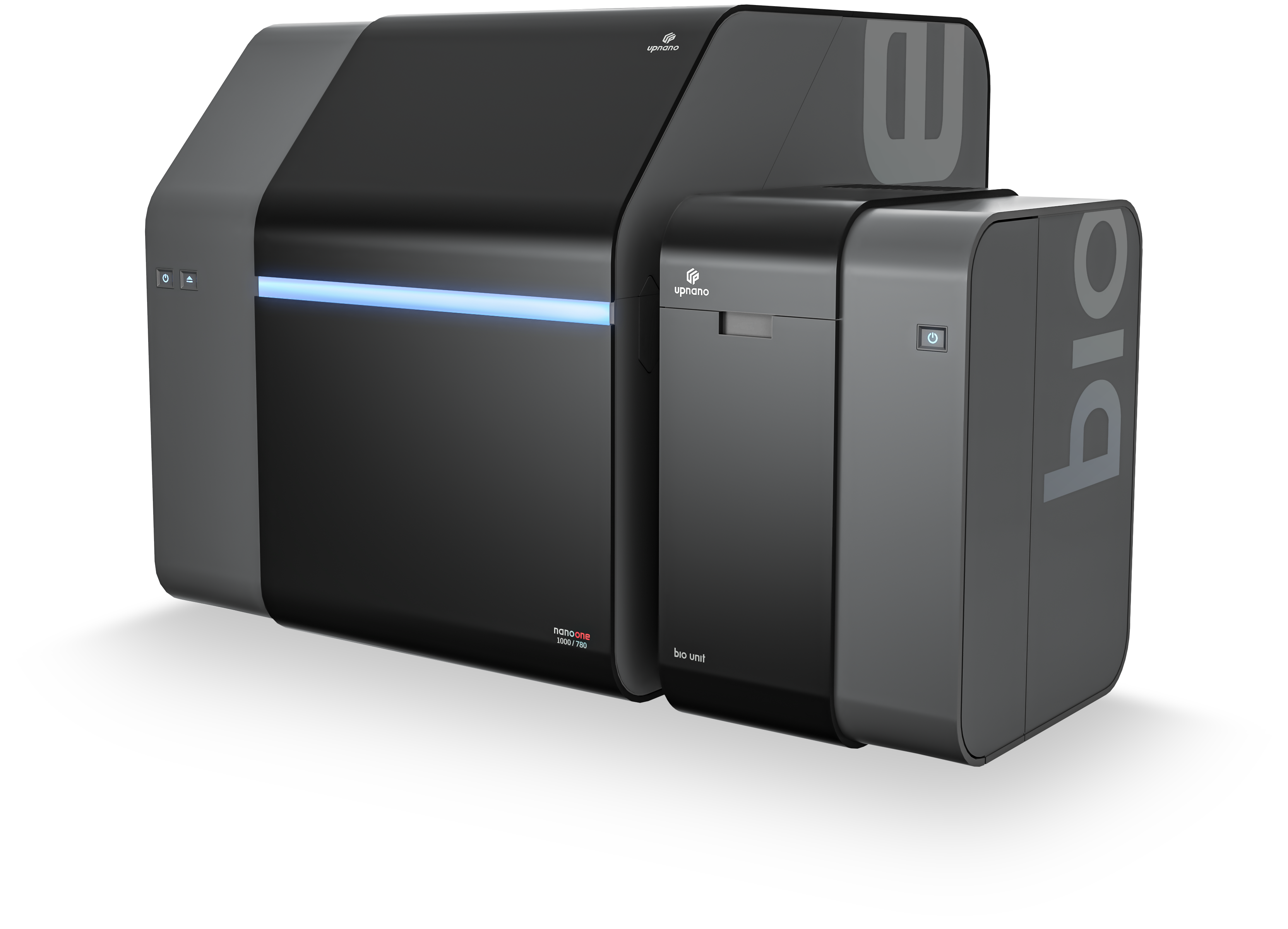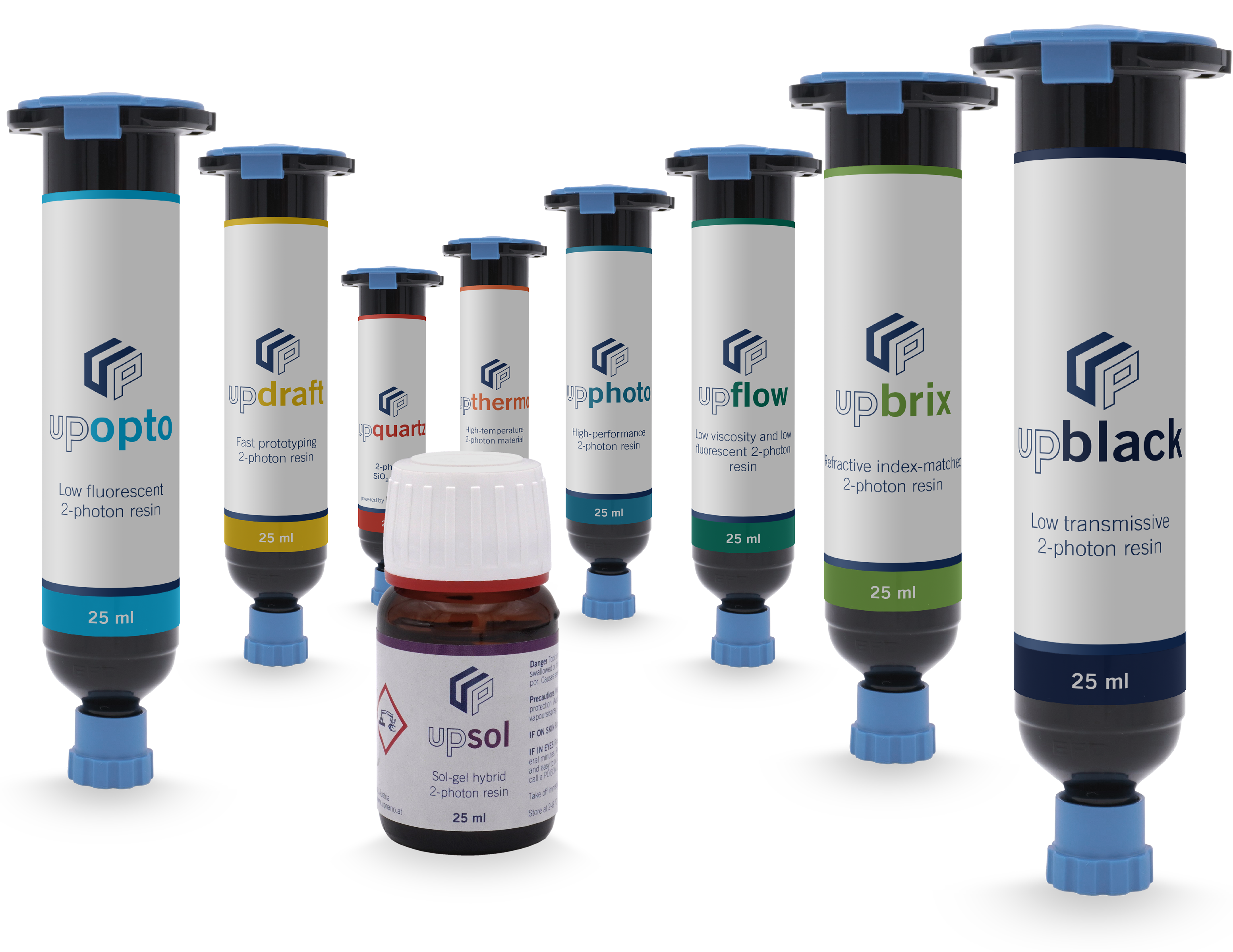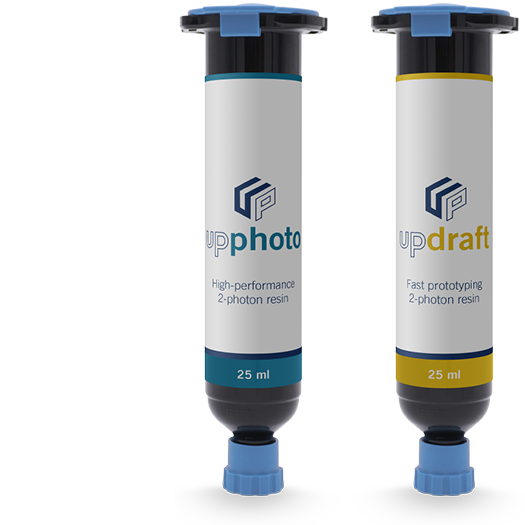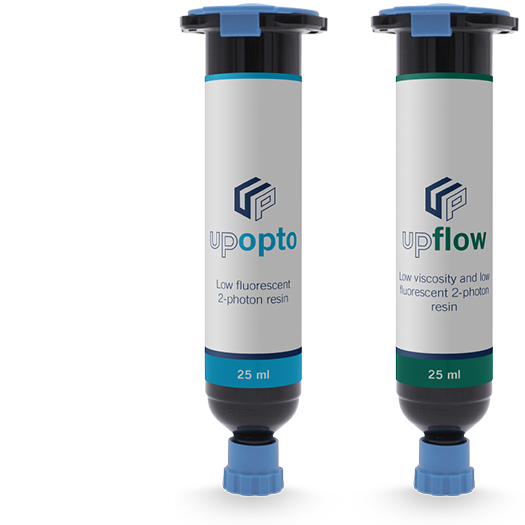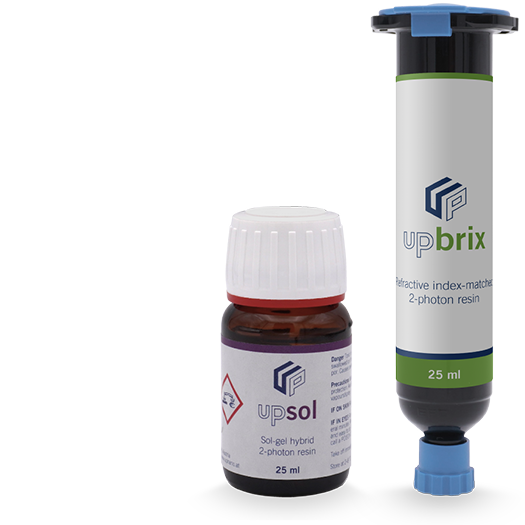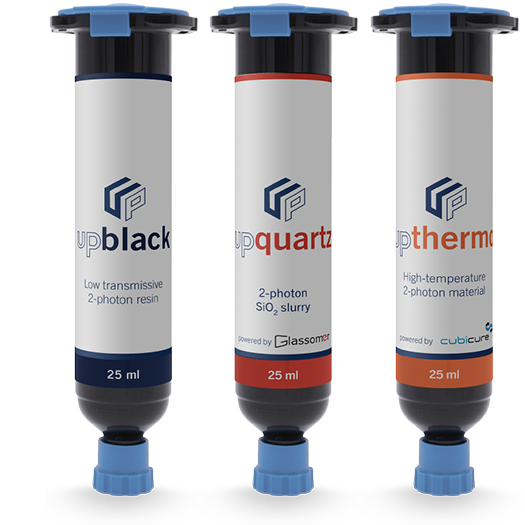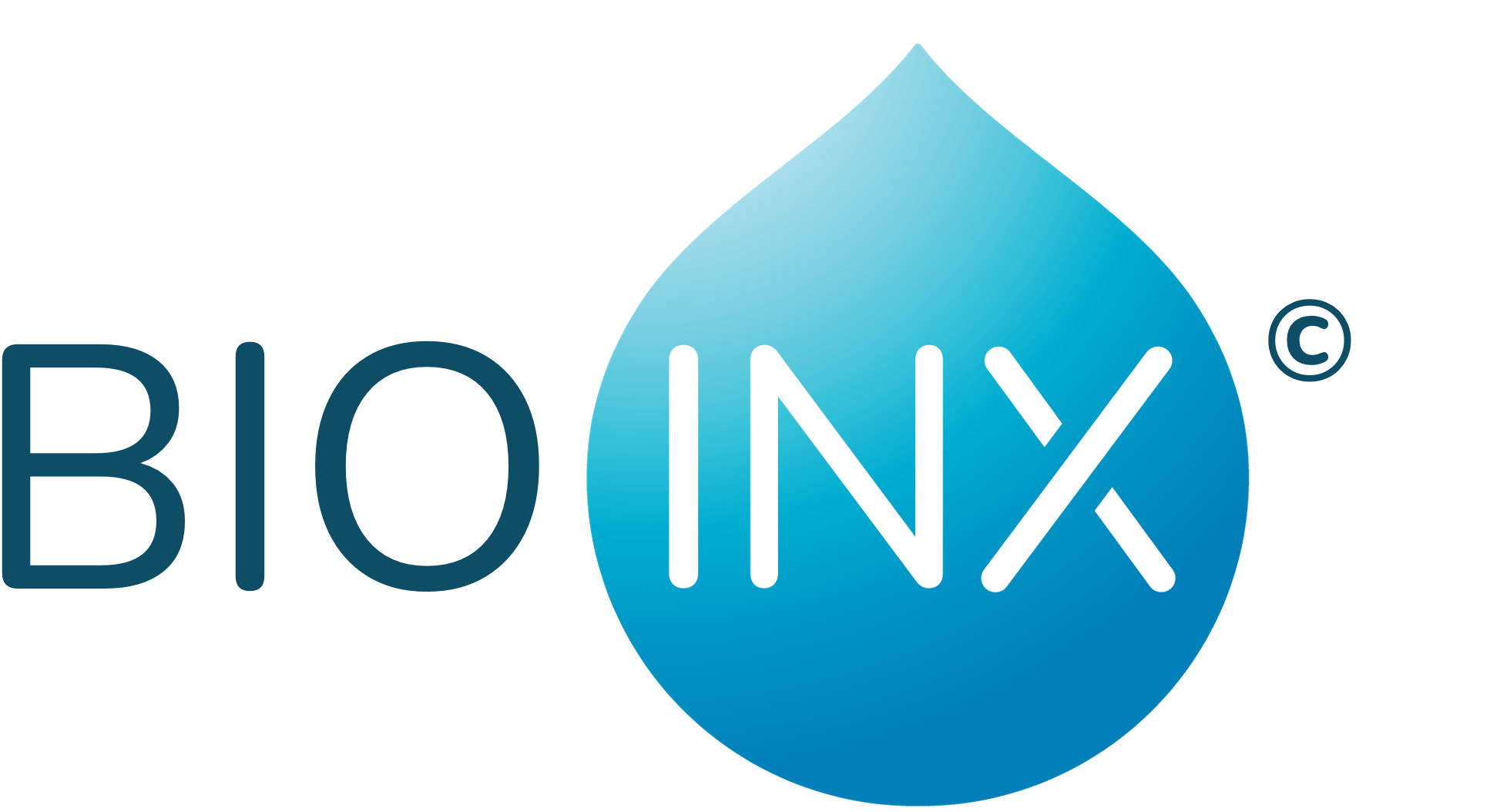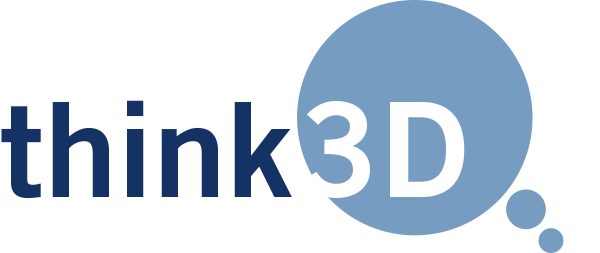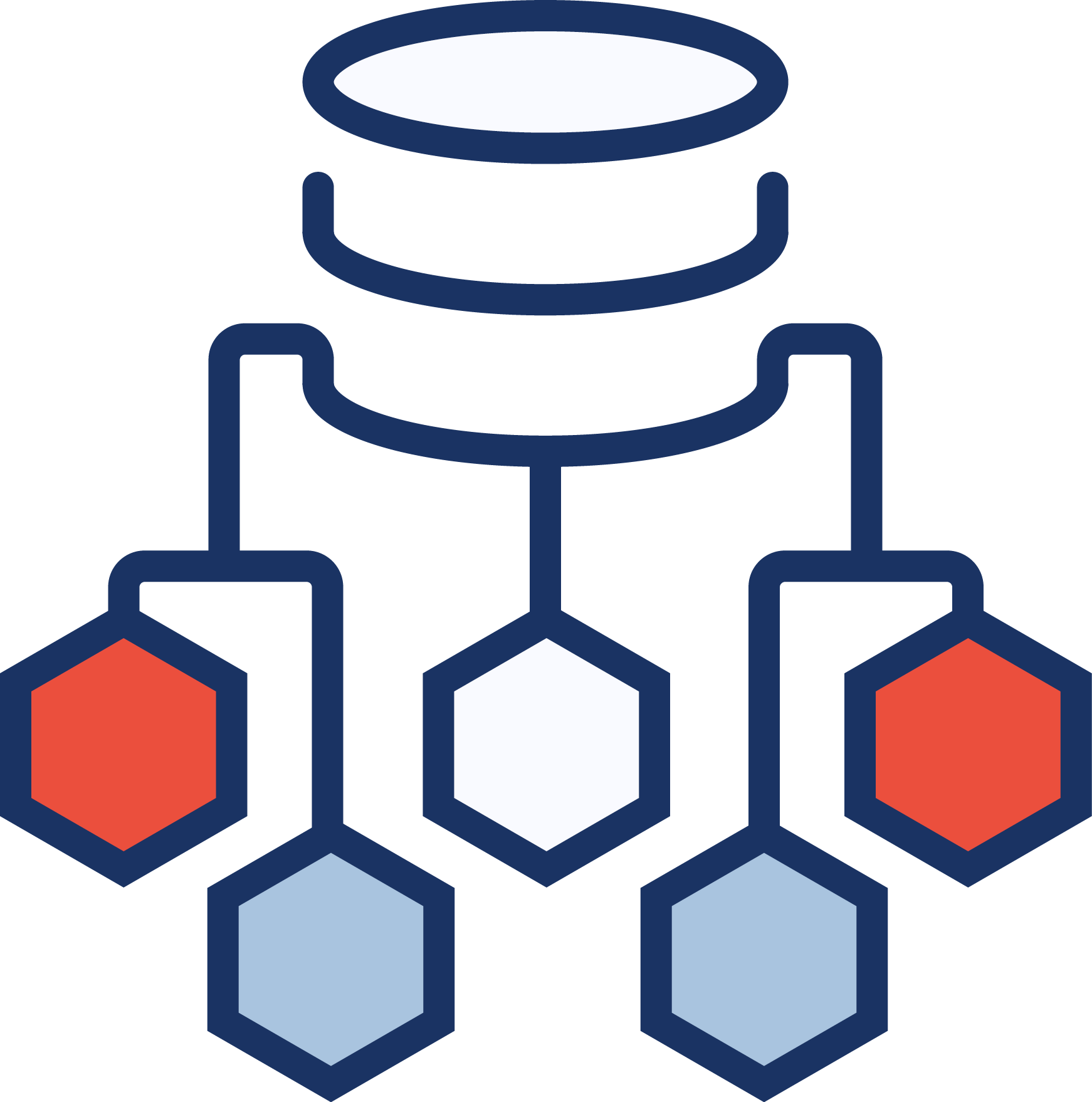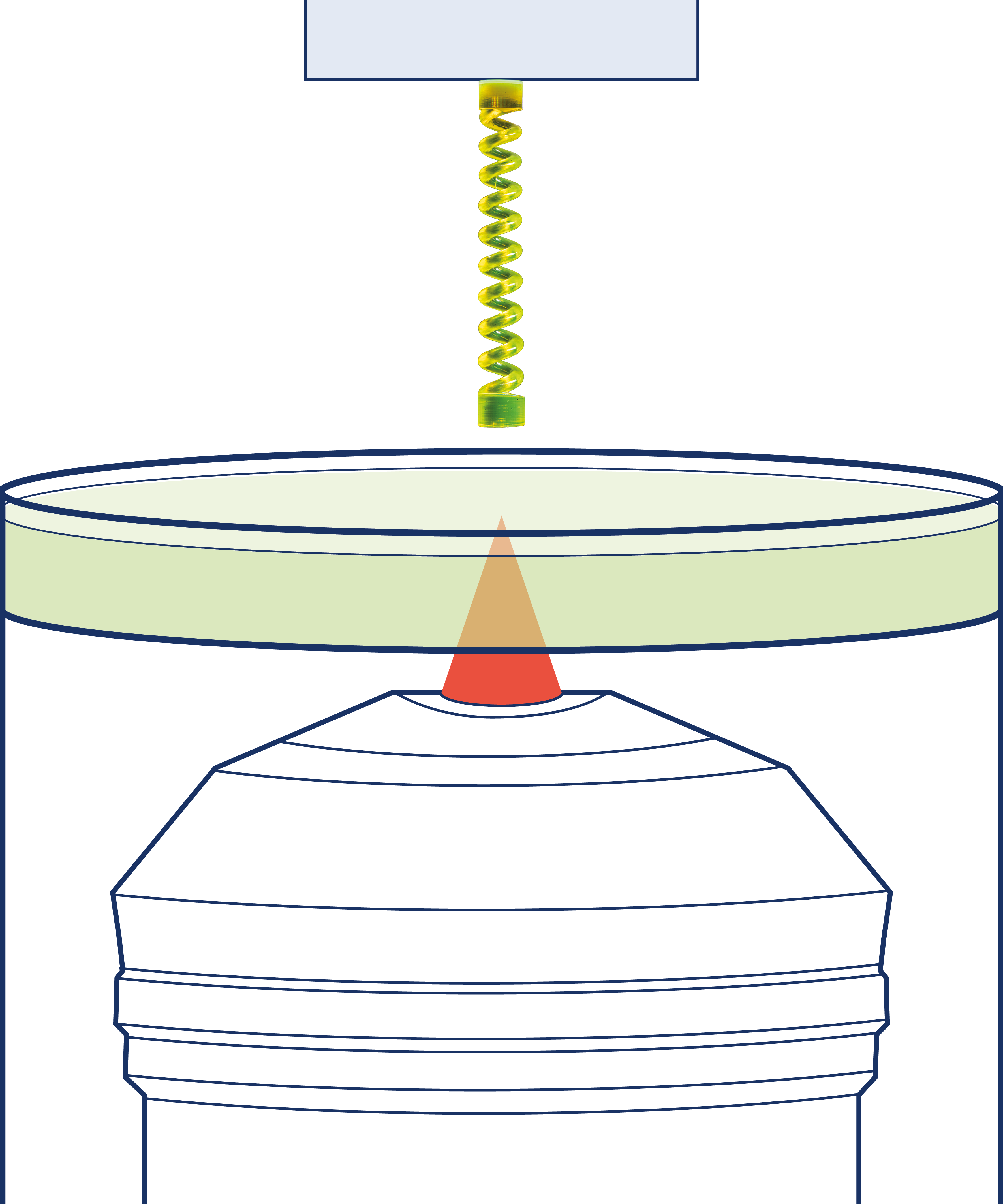
- High degree of design and manufacturing flexibility
- Compatible with standard substrates up to 40 mm edge length
- Vats equipped with cap for convenient resin storage
- Constant focusing power throughout the printing process
Vat mode
For the production of taller structures, NanoOne offers a unique vat mode that enables the fabrication of large objects with a height of up to 40 mm. In this mode, a vat with a precision glass window is positioned above the objective, preventing resin contact and preserving the focusing power of the objectives. The element is printed layer by layer, with the object being drawn up out of the resin vat while maintaining a constant distance between the current print layer and the objective. This approach ensures consistently high precision throughout the printing process, guaranteeing optimal printing conditions and precise results. It is the preferred printing mode for producing high-quality, large micro-components.
- High degree of design and manufacturing flexibility
- Compatible with standard substrates up to 40 mm edge length
- Vats equipped with cap for convenient resin storage
- Constant focusing power throughout the printing process
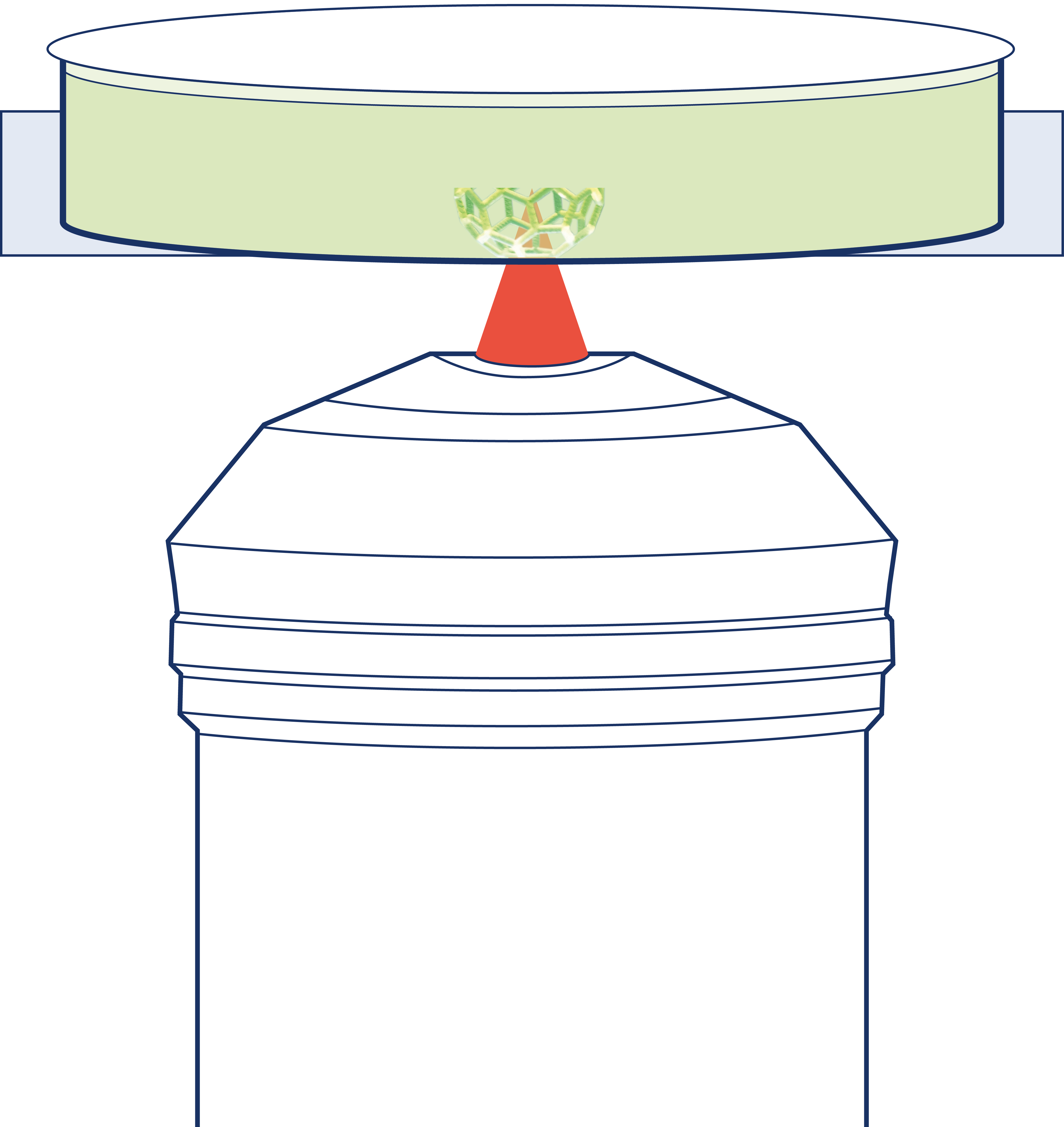
- Compatible with most printing resins from the portfolio
- For structuring directly within glass-bottom substrates
- Enables sterile production of micro-components
Bottom-up mode
The bottom-up mode provides an effective solution for producing flat structural elements and enables the direct manufacturing of high-resolution structures within a substrate. In this mode, the laser beam is focused through the high-precision glass bottom of the substrate, allowing the structure to be built from the bottom to the highest point of the geometry. Throughout the printing process, the distance between the objective and the build platform gradually decreases. Potential substrates suitable for this printing mode include well plates, petri dishes and microfluidic chips.
- Compatible with most printing resins from the portfolio
- For structuring directly within glass-bottom substrates
- Enables sterile production of micro-components
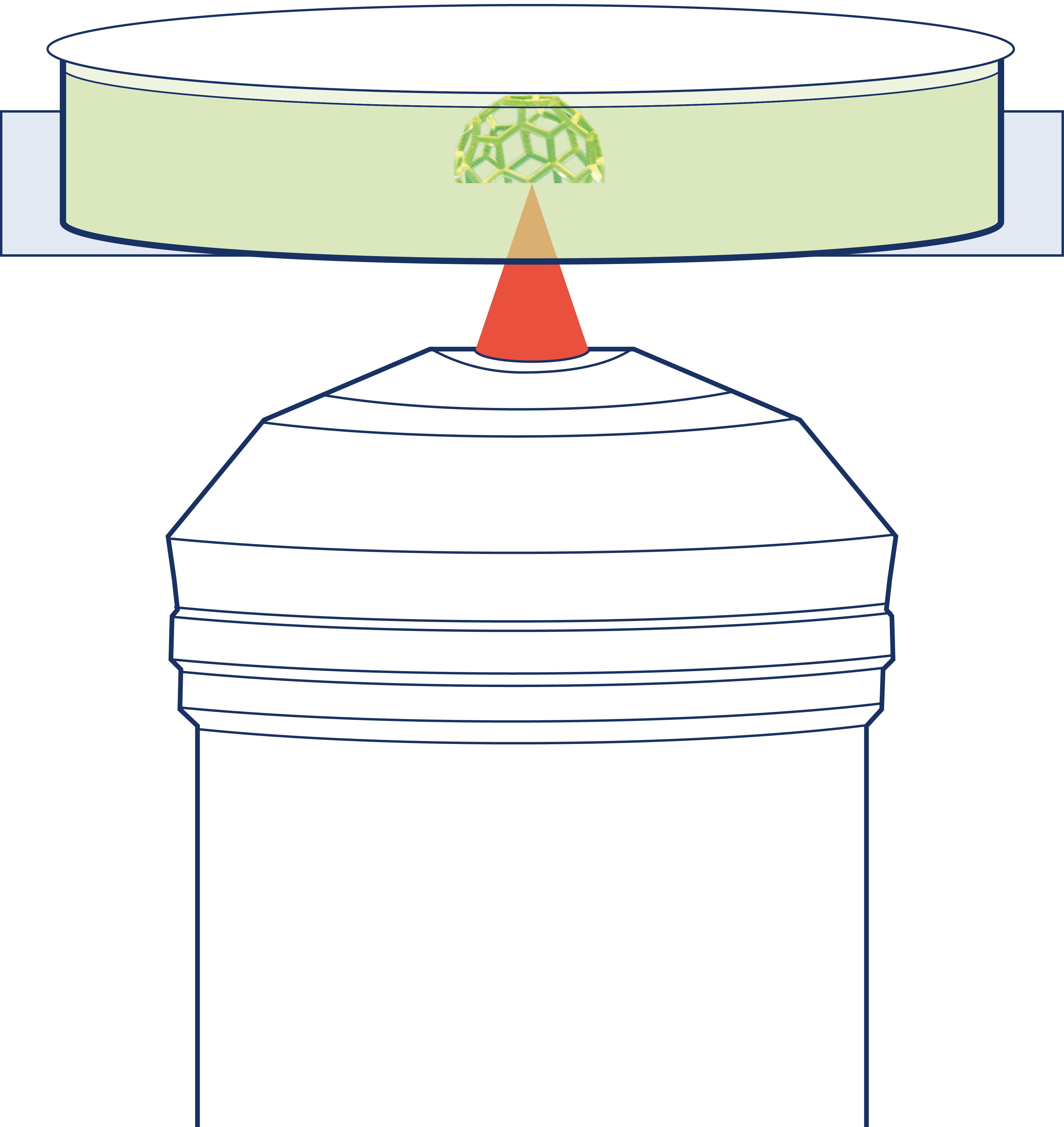
- For the production of complex, freestanding structures
- Printing of structures within a microfluidic channel
- Suitable for sterile manufacturing of structures and bioprinting
- Micro-component manufacturing directly on wafers
Top-down mode
Similar to the bottom-up approach, resin is applied to or within a chosen substrate. However, the difference lies in the initiation point of printing, which starts at the top of the geometry instead of the bottom. This method prevents objects from being printed through already polymerized resin, ensuring no loss of resolution throughout the printing process as the distance between the objective and the build platform gradually increases. While this print mode presents several advantages, it is limited to certain resins with higher viscosity or when using pre-coated substrates.
- For the production of complex, freestanding structures
- Printing of structures within a microfluidic channel
- Suitable for sterile manufacturing of structures and bioprinting
- Micro-component manufacturing directly on wafers


